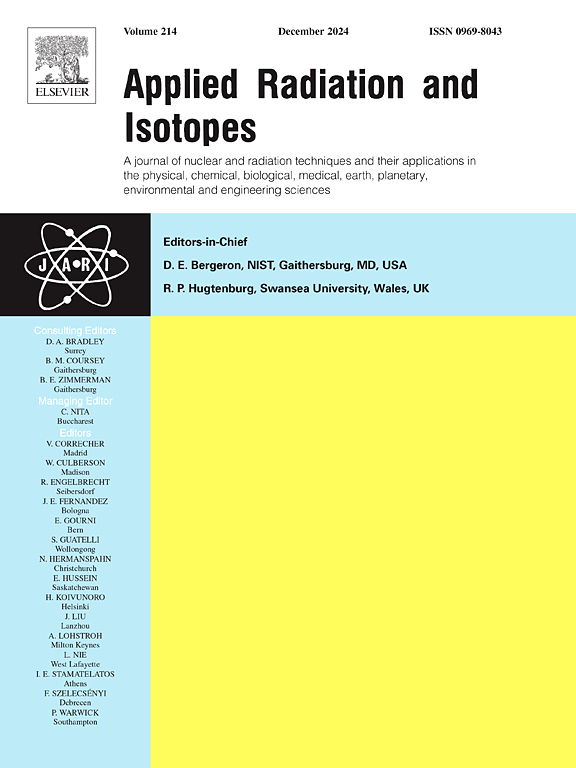Investigation on radiation interactions with some quenched alloys used in nuclear reactors
IF 1.6
3区 工程技术
Q3 CHEMISTRY, INORGANIC & NUCLEAR
引用次数: 0
Abstract
This study presents the investigation of the radiation interaction properties for SS304 and Incoloy 800H alloys, which are widely used in PWRs and HTGRs. First of all, theoretical and MC simulation evaluations are performed, then experiments are conducted for further analysis. The findings indicate no significant difference in mass attenuation coefficients (MAC) and gamma-ray radiation protection efficiencies (RPE) between the two alloys. Additionally, both SS304 and Incoloy 800H exhibit similar neutron shielding capabilities, with comparable effective removal cross-sections and numbers of transmitted neutrons at different neutron energies (0.025 eV, 100 eV and 4.5 MeV). The study also examines secondary radiation generated by neutron interactions. The impact of thermal treatment (300 °C, 500 °C, 700 °C and 1000 °C) and cooling approaches (quenching and self-cooling) on these alloys were further experimentally examined. Notably, thermal treatment changes the MAC values, particularly at 1000 °C, with SS304 showing a more distinct change than Incoloy 800H. Besides, quenched samples have higher MAC values compared to self-cooled samples, especially at 1000 °C. However, the microhardness values remained largely unaffected by heat treatment, except at 1000 °C, where both alloys exhibited reduced microhardness. The study underscores that there is no significant difference in microhardness between quenching and self-cooling techniques. These results provide valuable insights for enhancing the safety and efficiency of radiation shielding materials in nuclear reactors.
求助全文
约1分钟内获得全文
求助全文
来源期刊

Applied Radiation and Isotopes
工程技术-核科学技术
CiteScore
3.00
自引率
12.50%
发文量
406
审稿时长
13.5 months
期刊介绍:
Applied Radiation and Isotopes provides a high quality medium for the publication of substantial, original and scientific and technological papers on the development and peaceful application of nuclear, radiation and radionuclide techniques in chemistry, physics, biochemistry, biology, medicine, security, engineering and in the earth, planetary and environmental sciences, all including dosimetry. Nuclear techniques are defined in the broadest sense and both experimental and theoretical papers are welcome. They include the development and use of α- and β-particles, X-rays and γ-rays, neutrons and other nuclear particles and radiations from all sources, including radionuclides, synchrotron sources, cyclotrons and reactors and from the natural environment.
The journal aims to publish papers with significance to an international audience, containing substantial novelty and scientific impact. The Editors reserve the rights to reject, with or without external review, papers that do not meet these criteria.
Papers dealing with radiation processing, i.e., where radiation is used to bring about a biological, chemical or physical change in a material, should be directed to our sister journal Radiation Physics and Chemistry.
 求助内容:
求助内容: 应助结果提醒方式:
应助结果提醒方式:


